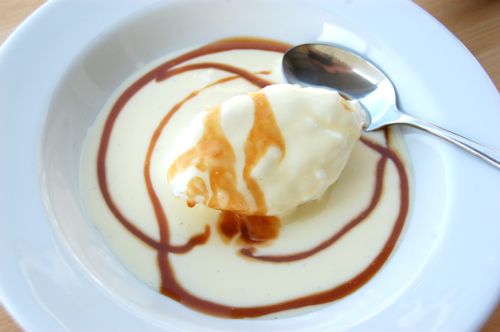Old is Gold
Reader Jay writes:
When you were talking about macarons, you said that old egg whites are better. Does the rule hold true for floating islands?
It does. Older eggs are better when it comes to making any sort of foam. Why? Simply because older eggs have runnier whites, and when egg whites are runny it’s easier to put the hurt on the proteins they contain. Think of it like this: a whip cuts through a bowl of water with much more force than it does through a bowl of, say, honey. The result is that older whites are not only easier to whip, they whip up higher.
READ ON